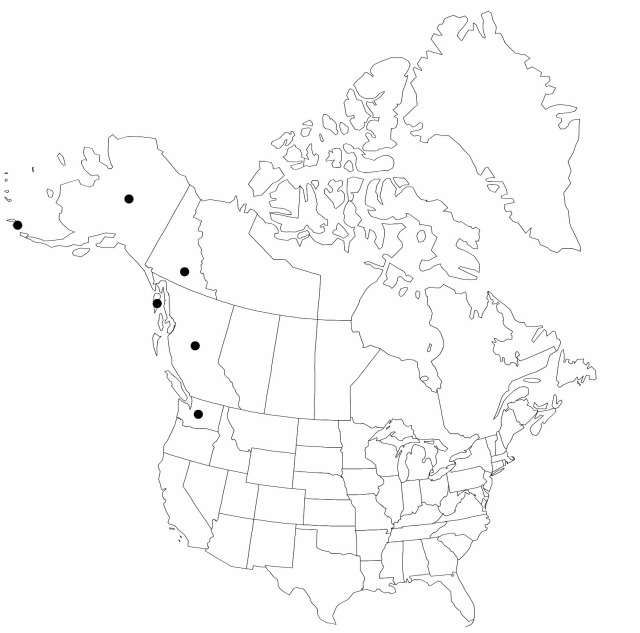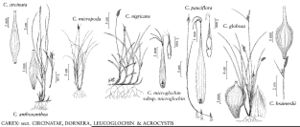Difference between revisions of "Carex anthoxanthea"
in C. B. Presl, Reliq. Haenk. 1: 203. 1828.
FNA>Volume Importer |
FNA>Volume Importer |
||
| Line 46: | Line 46: | ||
|publication year=1828 | |publication year=1828 | ||
|special status= | |special status= | ||
| − | |source xml=https://jpend@bitbucket.org/aafc-mbb/fna-data-curation.git/src/ | + | |source xml=https://jpend@bitbucket.org/aafc-mbb/fna-data-curation.git/src/f6b125a955440c0872999024f038d74684f65921/coarse_grained_fna_xml/V23/V23_992.xml |
|genus=Carex | |genus=Carex | ||
|section=Carex sect. Circinatae | |section=Carex sect. Circinatae | ||
Revision as of 19:11, 24 September 2019
Plants not cespitose, long-rhizomatous. Culms 5–40 cm. Leaves flat, straight, 1.5–2.5 mm wide. Spike pistillate, or staminate, or, rarely, androgynous. Pistillate scales shorter than to equaling the perigynia, beak and distalmost body of perigynia exposed, apex obtuse to cuspitate. Perigynia 3–4 mm, distal margins smooth; beak tip dark.
Phenology: Fruiting Jun–Aug.
Habitat: Bogs, wet meadows
Elevation: 10–1000 m
Distribution

B.C., Yukon, Alaska, Wash., Eurasia [Russian Far East (Chukotka)].
Discussion
Selected References
None.
Lower Taxa
None.
